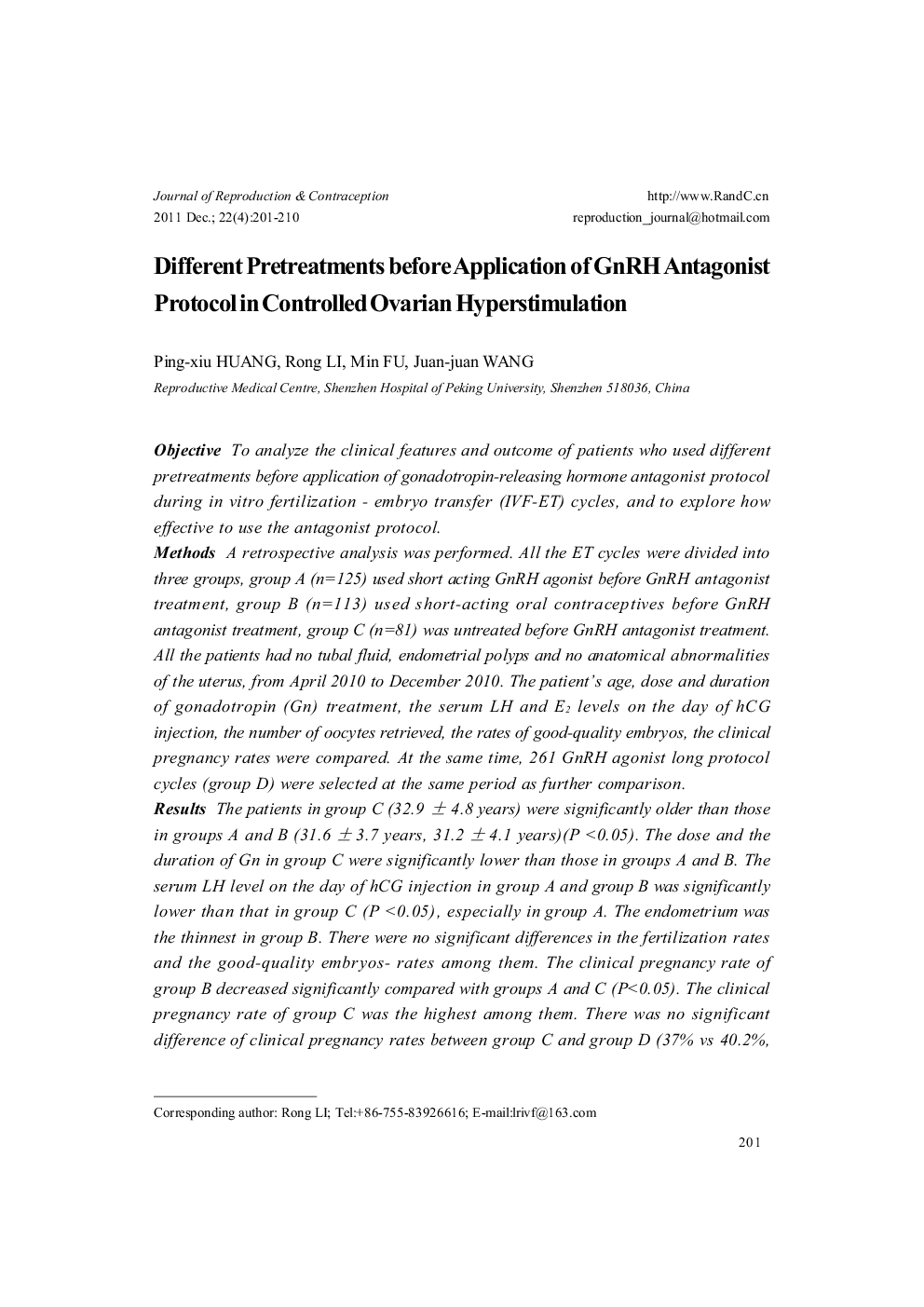| Article ID | Journal | Published Year | Pages | File Type |
|---|---|---|---|---|
| 3965620 | Journal of Reproduction and Contraception | 2011 | 10 Pages |
ObjectiveTo analyze the clinical features and outcome of patients who used different pretreatments before application of gonadotropin-releasing hormone antagonist protocol during in vitro fertilization – embryo transfer (IVF-ET) cycles, and to explore how effective to use the antagonist protocol.MethodsA retrospective analysis was performed. All the ET cycles were divided into three groups, group A (n=125) used short acting GnRH agonist before GnRH antagonist treatment, group B (n=113) used short-acting oral contraceptives before GnRH antagonist treatment, group C (n=81) was untreated before GnRH antagonist treatment. All the patients had no tubal fluid, endometrial polyps and no anatomical abnormalities of the uterus, from April 2010 to December 2010. The patient's age, dose and duration of gonadotropin (Gn) treatment, the serum LH and E2 levels on the day of hCG injection, the number of oocytes retrieved, the rates of good-quality embryos, the clinical pregnancy rates were compared. At the same time, 261 GnRH agonist long protocol cycles (group D) were selected at the same period as further comparison.ResultsThe patients in group C (32.9 ± 4.8 years) were significantly older than those in groups A and B (31.6 ± 3. 7 years, 31.2 ±4.1 years)(P <0.05). The dose and the duration of Gn in group C were significantly lower than those in groups A and B. The serum LH level on the day of hCG injection in group A and group B was significantly lower than that in group C (P <0.05), especially in group A. The endometrium was the thinnest in group B. There were no significant differences in the fertilization rates and the good-quality embryos-rates among them. The clinical pregnancy rate of group B decreased significantly compared with groups A and C (P<0.05). The clinical pregnancy rate of group C was the highest among them. There was no significant difference of clinical pregnancy rates between group C and group D (37% vs 40.2%, P>0.05). However, the dose (19.8 ± 6.6 ampoule vs 26.4 ± 8.1 ampoule) and the duration (9.0 ± 1.6 d vs 11.6 ± 2.5 d) of Gn treatment in group C were decreased significantly than those in group D, P<0.05.ConclusionThe short acting GnRH agonist used before GnRH antagonist treatment during IVF-ET cycles failed to improve the pregnancy rates, the use of short-acting oral contraceptives before GnRH antagonist treatment makes the pregnancy rates decrease significantly, but untreated before GnRH antagonist protocol can get a better clinical outcome compared with agonist long protocol. Untreated GnRH anagonist protocol is the best GnRH anagonist protocol.
